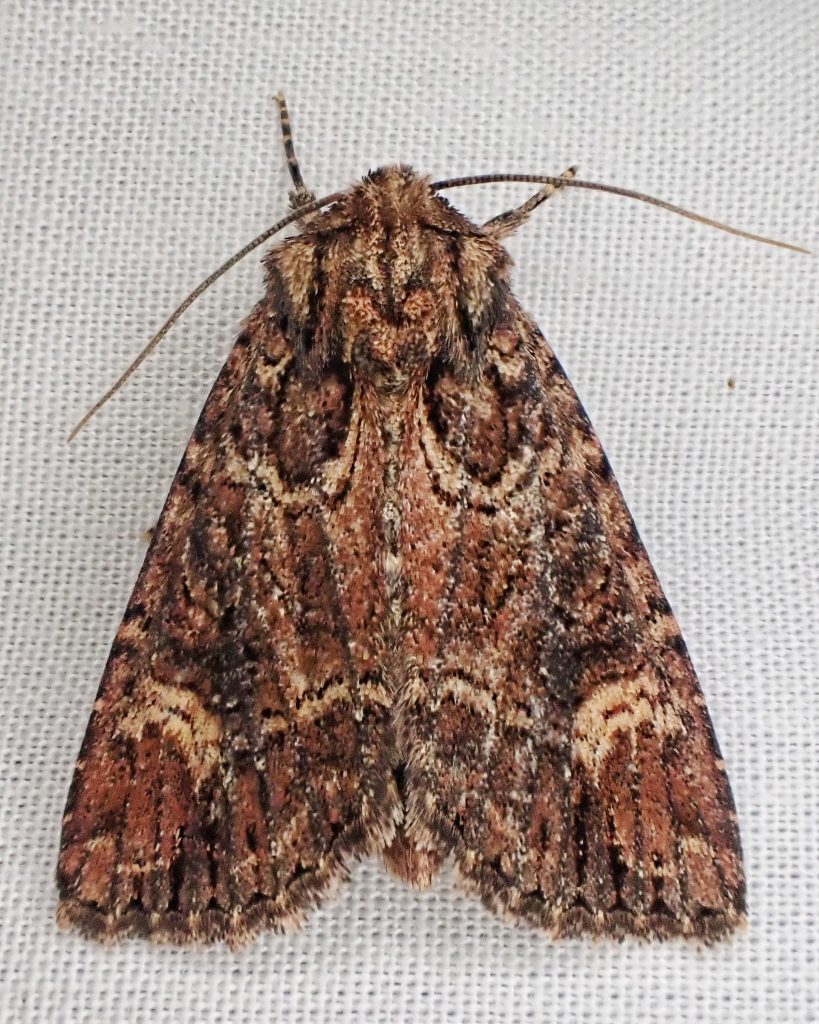
After 9 nights of mothing I have shaken off some (but definitely not all) of the rust on my moth identification skills, but busy patterned noctuids, especially ones that are worn, were never my forte, and it wasn’t until Carl Barrentine suggested Aseptis binotata as an id for one worn moth found on the 5th Night of Moth Week that I realized I’d been seeing them almost every night. Well, probably seeing them, since I hadn’t been photographing most of them and thus hadn’t looked for the basal dash and black in the subterminal area that would have identified them as Paraseptis adnixa. But it turns out even worn Aseptis binotata are fairly distinct amongst brown noctuids by virtue of the light spot behind the reniform spot, and dark areas near the base of the forewings.
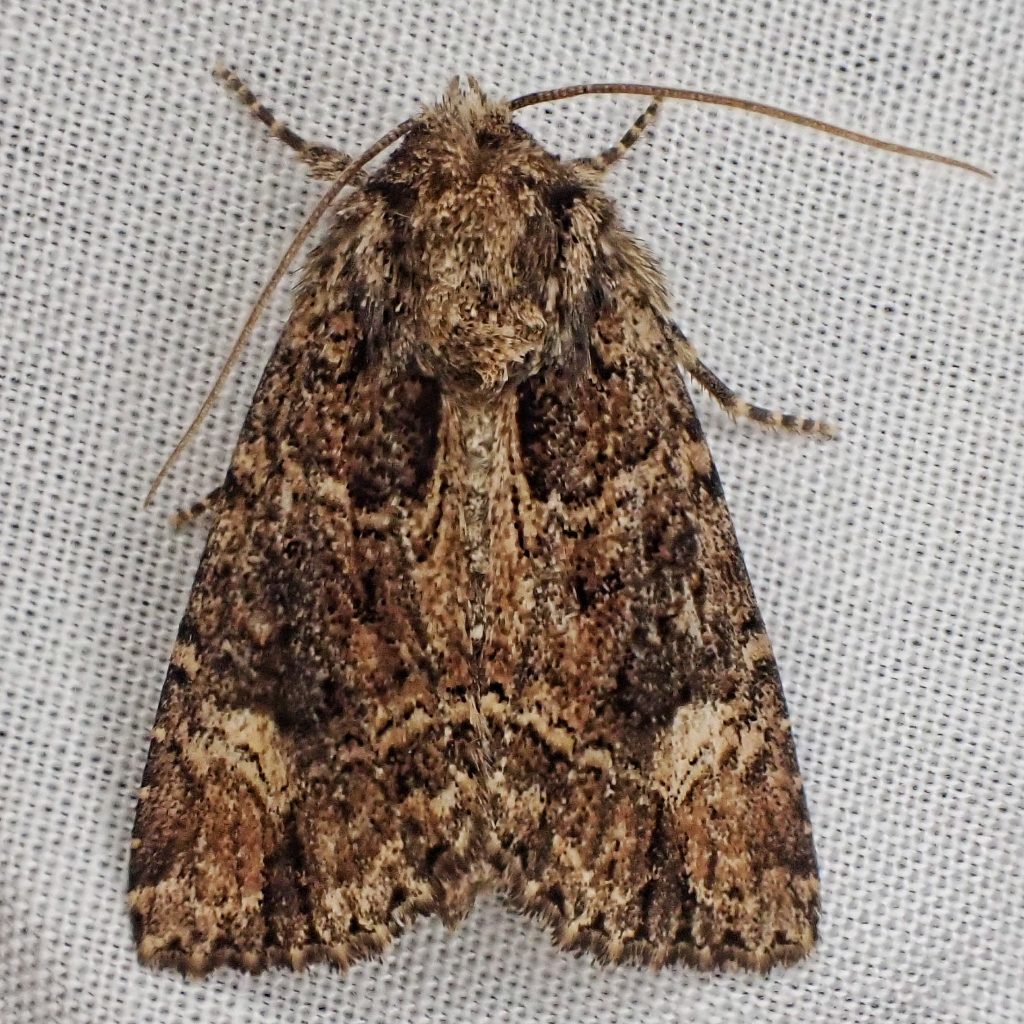
It’s not surprising that I found these moths (BugGuide lists a common name of rusty shoulder knot moth, but PNW Moths and MPG do not mention one) in nearly every location, because their larvae are known to feed on woody shrubs and trees in at least 10 different families, so that if there is almost anything growing more than three feet tall in an area, and it has deciduous leaves, the larvae of this species can probably feed on it until adulthood. But it wasn’t until the 8th Night of Moth Week that I finally found one that was fresh enough to be sure that key elements hadn’t been worn off, although the most handsome one that came to my lights visited me on the 9th night of Moth Week.
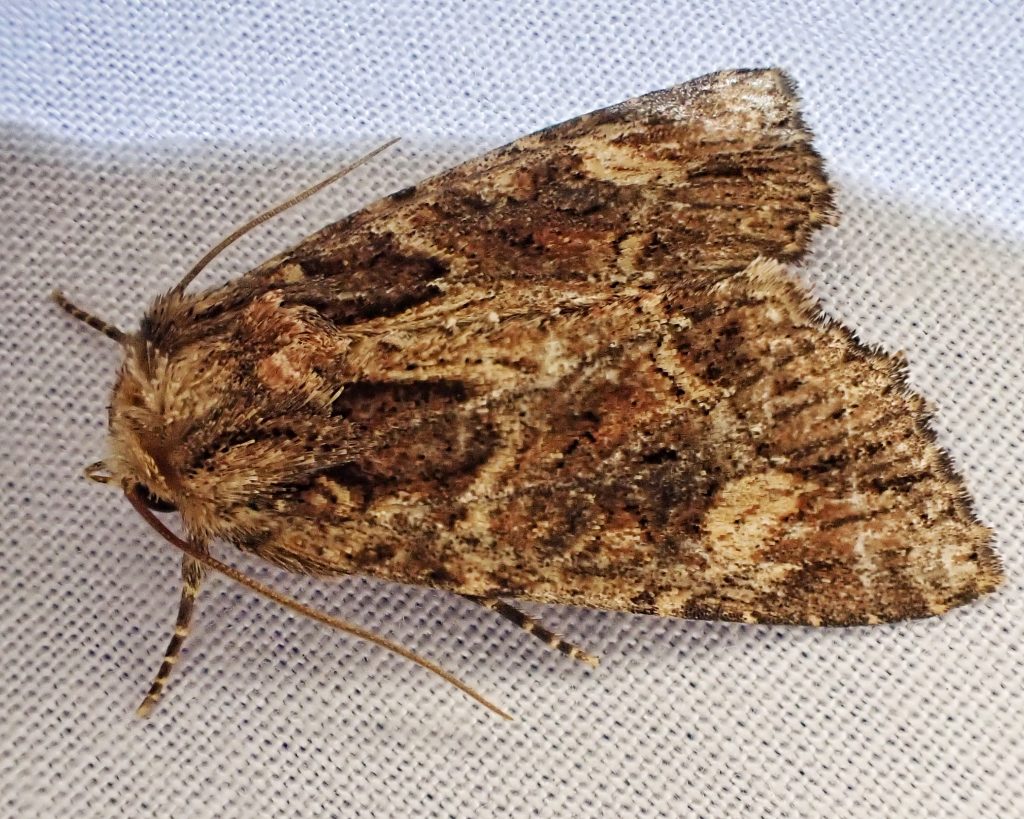
Description– “Aseptis binotata is a common medium-sized member of the genus with a wingspan of 32.5±1.3 mm (n=25; range 29.5–35.0 mm). It is the most variable Aseptis with respect to forewing color and pattern strength. It may be brownish, warm dark brown, pale to medium gray brown, yellowish light brown, or reddish brown depending on locality. The most noticeable marking in dark specimens is the large pale yellowish postreniform patch, which is bisected by the dark postmedial line. The antemedial line is strongly convex laterally and is filled with light tan. Black forewing markings include a series of wedges near the outer margin below the apex, the outlines of the three forewing spots, and in most specimens a short black basal dash. Pale specimens can be washed out or have contrasting dark markings. There is striking variation in this species, both within populations and over larger distances. Specimens from the coastal region of the Pacific Northwest are fairly uniform with a warm dark brown forewing with distinct maculation.” Revision of the genus Aseptis McDunnough (Lepidoptera, Noctuidae, Noctuinae, Xylenini) with a description of two new genera, Paraseptis and Viridiseptis
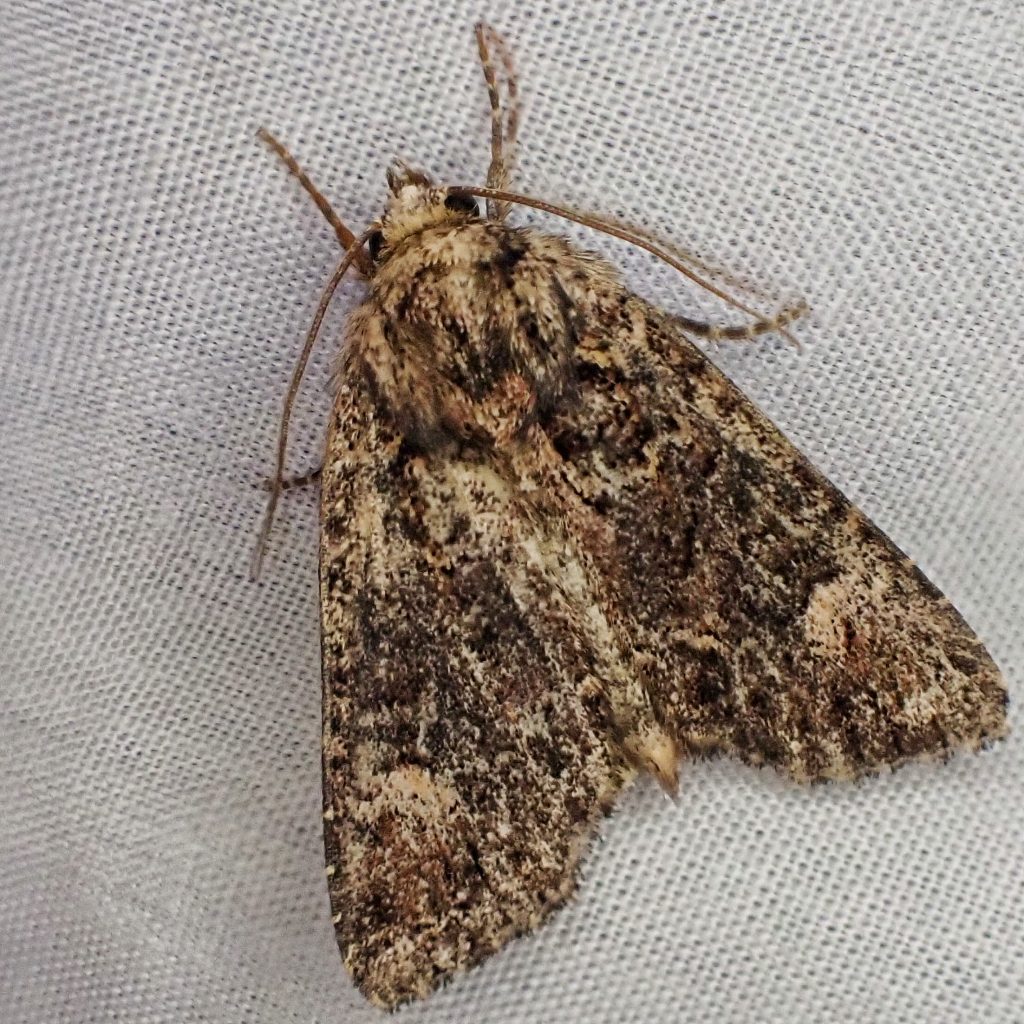
Similar species– “This species can be distinguished from all other brown Pacific Northwest moths except Paraseptis adnixa by the “false” ochre reniform spot lateral to the true spot. All other similar species have pale filling inside the spot, not beside it. Aseptis binotata lacks a black basal dash which is present in P. adnixa.” PNW Moths | Aseptis binotata
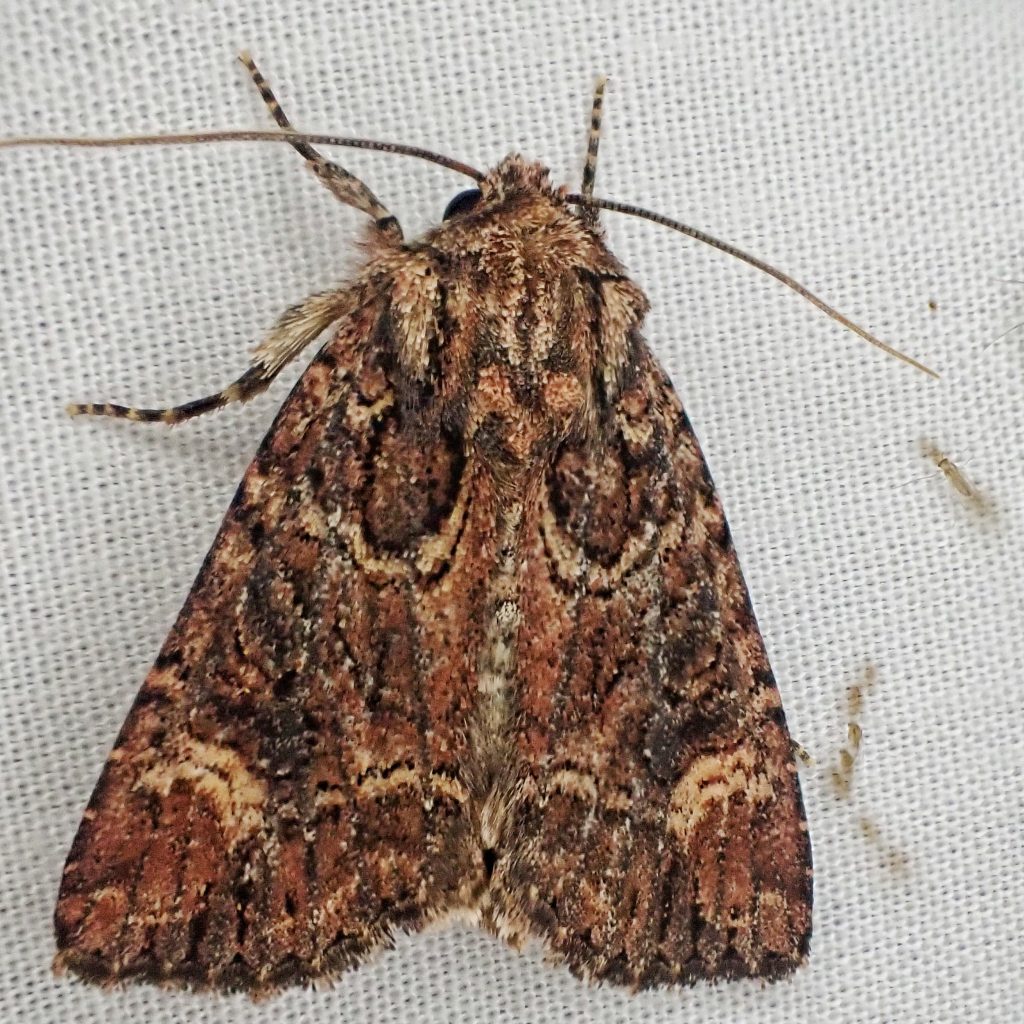
Habitat– “This species is common to abundant in all types of forest habitats throughout much of western North America. In the Pacific Northwest, these habitats include coastal rainforests, oak woodlands, mixed hardwood forests, and riparian forests at low elevations west of the Cascades, and mixed hardwood-conifer or ponderosa pine forests at middle to high elevations in the Siskiyou, Cascade, and Rocky Mountains. It is also found in shrub steppe, most commonly in riparian areas.” PNW Moths | Aseptis binotata
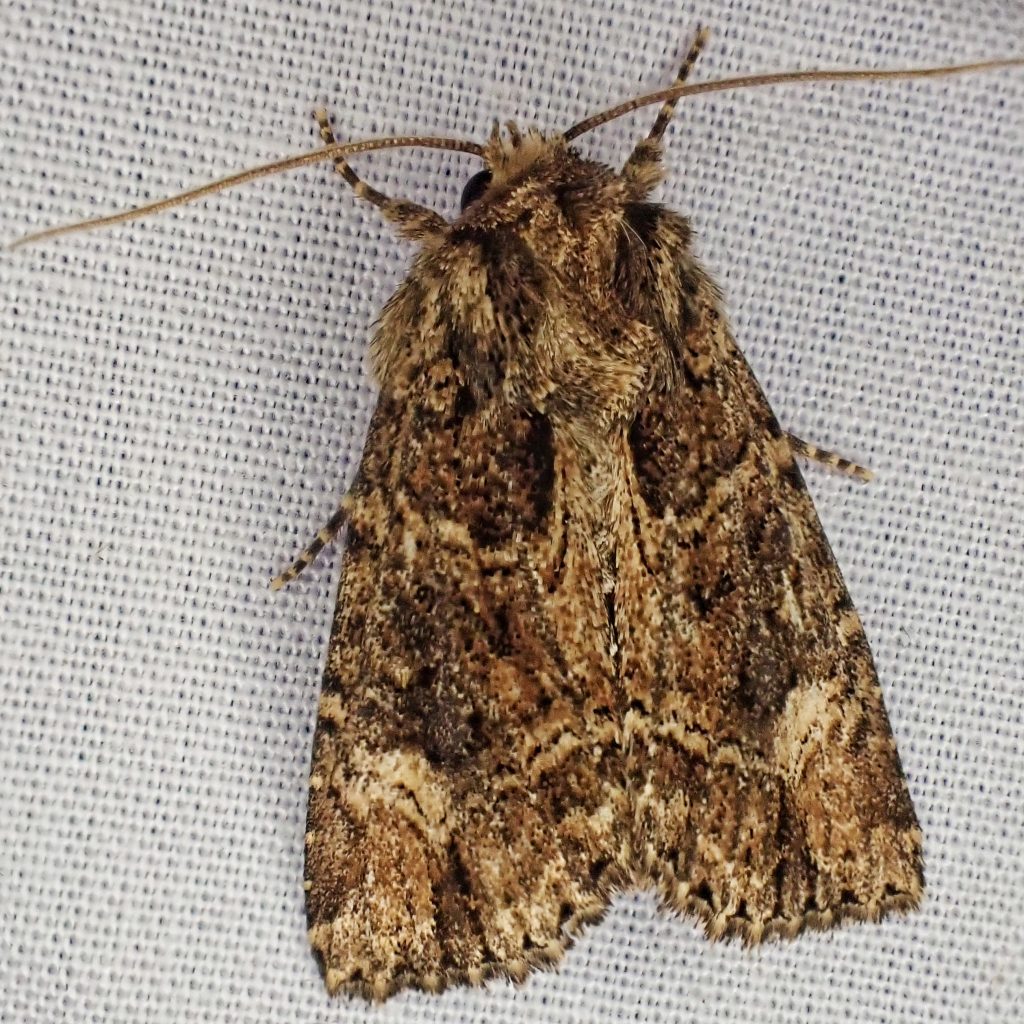
Range– “From British Columbia to Alberta, Wyoming, and Nebraska and along the Pacific Coast to Mexico.” Species Aseptis binotata – Rusty Shoulder Knot Moth – Hodges#9532 – BugGuide.Net; “Aseptis binotata is widespread in the Northwest, occurring on both sides of the Cascades as far north as Vancouver Island near the coast and south-central British Columbia inland. The range extends east to southeastern British Columbia, western Montana, and Wyoming. This species is least common in extreme southeastern Oregon and southern Idaho where it has a spotty distribution in isolated mountains.” PNW Moths | Aseptis binotata
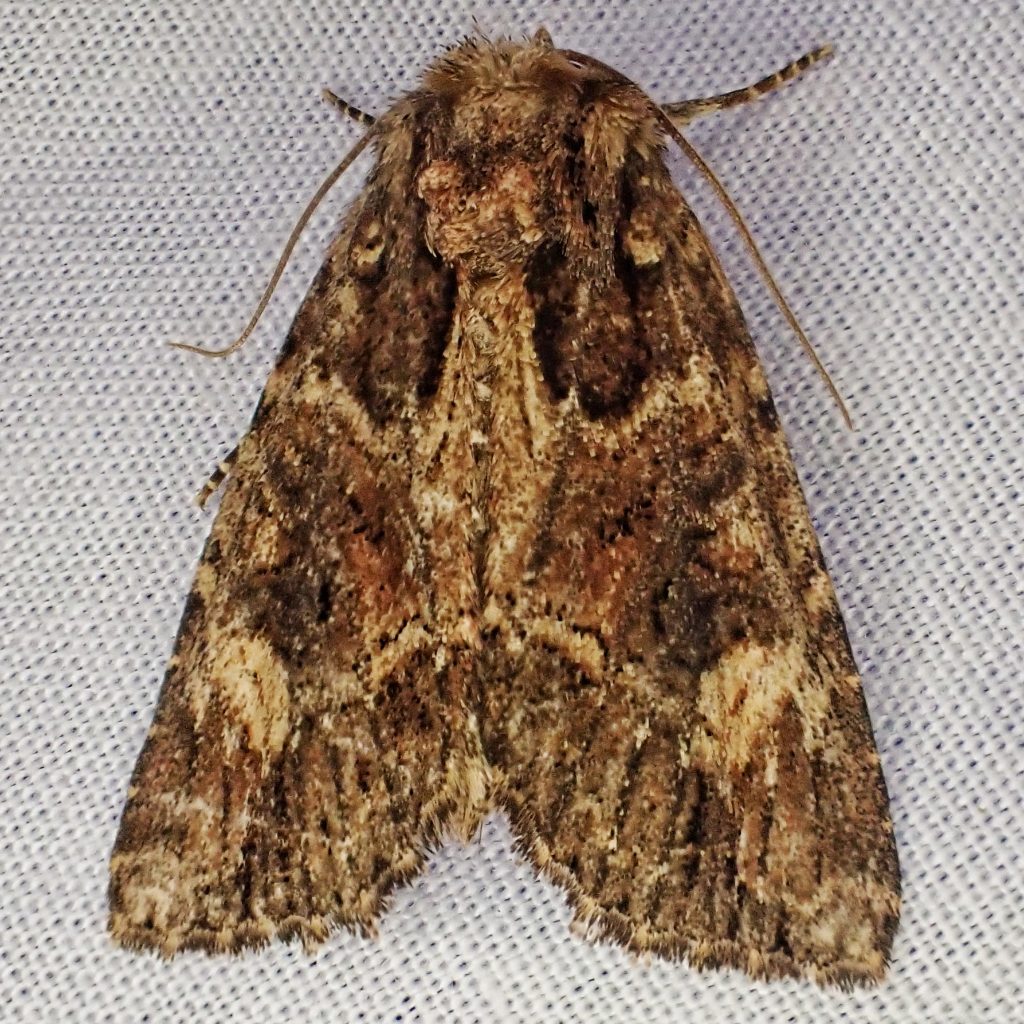
Eats– “This species is a very broad generalist feeding on all types of hardwoods including the families Aceraceae, Betulaceae, Fagaceae, Rosaceae, Ericaceae, Rhamnaceae, Cornaceae, Caprifoliaceae, Grossulariaceae, and Salicaceae.” PNW Moths | Aseptis binotata
Eaten by– Presumably a host for parasitoids in Hymenoptera and Diptera, and probably preyed upon by insectivores of all classes, but I can find nothing specific for this species.
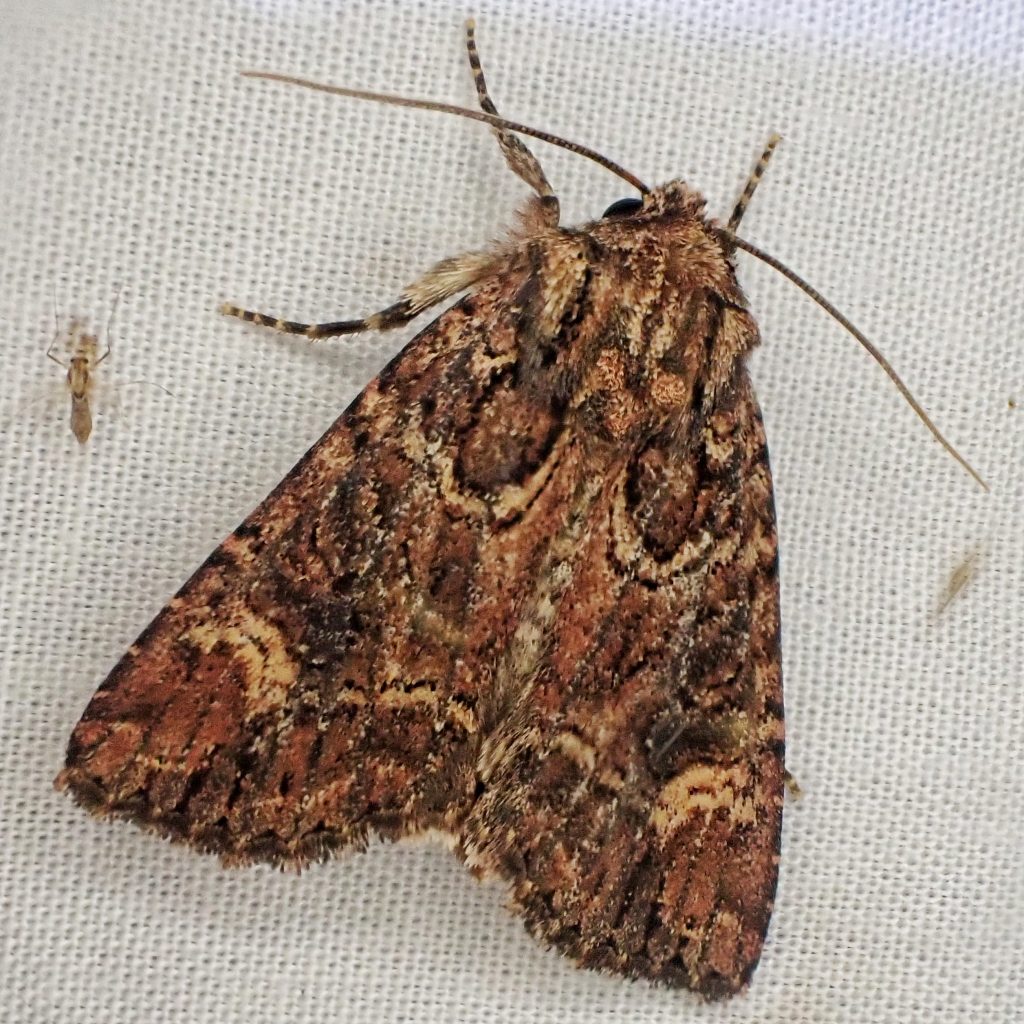
Adults active– Early June through August, with a peak in July
Life cycle– This species appears to be univoltine, and based on the timing of adult flight I would guess it overwinters as late stage larvae in diapause.
Etymology of names– Aseptis “…was presumably chosen by James McDunnough to denote its distinction from Septis Hübner, a synonym of Apamea Ochsenheimer, in the Apameini. Aseptis and Apamea are not related closely.” Revision of the genus Aseptis McDunnough (Lepidoptera, Noctuidae, Noctuinae, Xylenini) with a description of two new genera, Paraseptis and Viridiseptis. The specific epithet binotata is from the Latin words for ‘two marked’, though I cannot ascertain what two marks Walker was referring to.
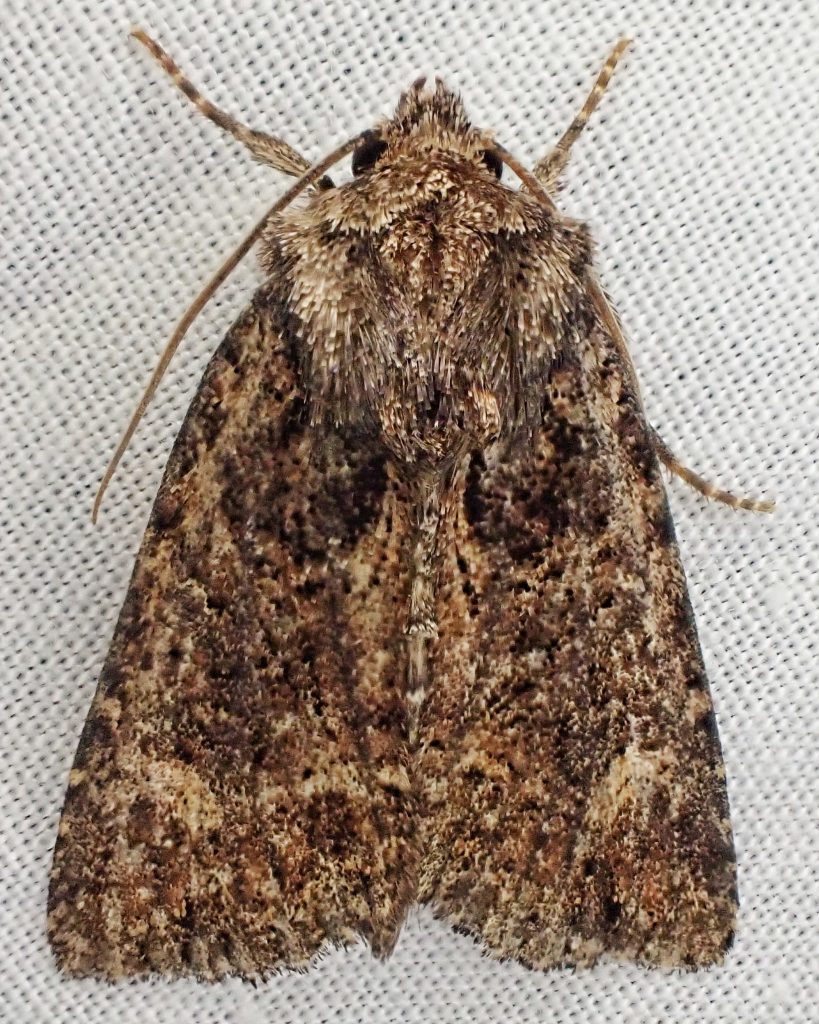
Species Aseptis binotata – Rusty Shoulder Knot Moth – Hodges#9532 – BugGuide.Net
E-Fauna BC: Electronic Atlas of the Fauna of BC (Mobile Atlas Page)
http://mothphotographersgroup.msstate.edu/species.php?hodges=9532

1 thought on “Aseptis binotata”